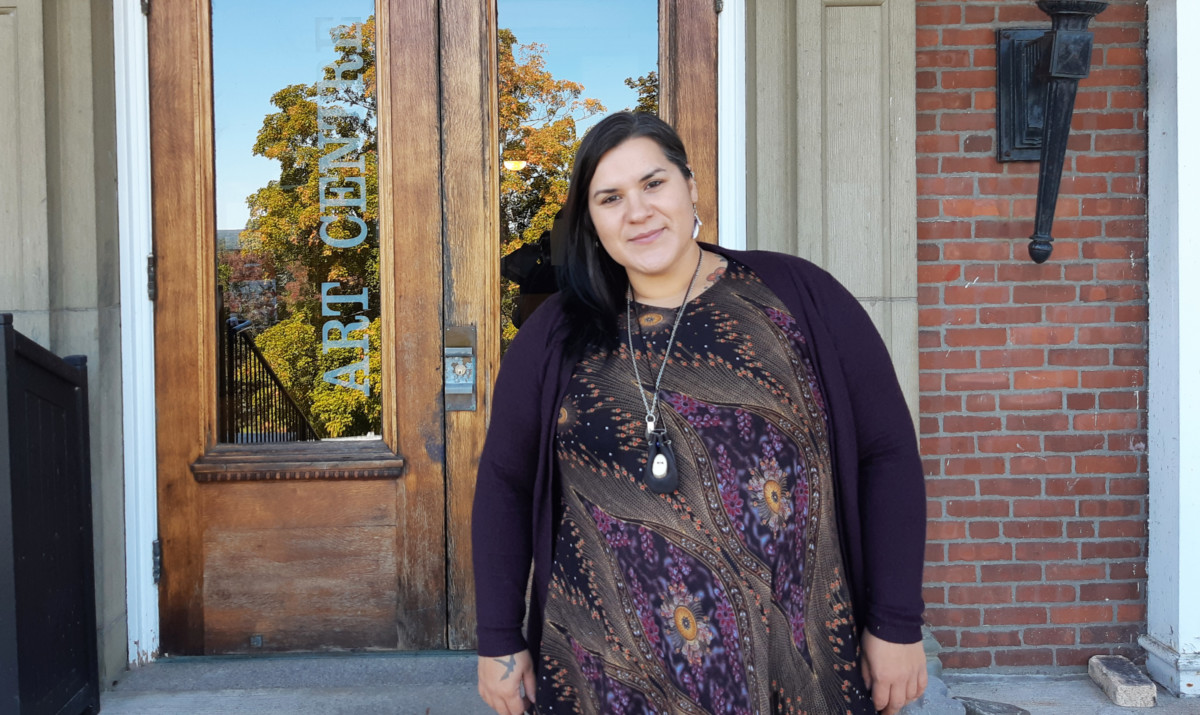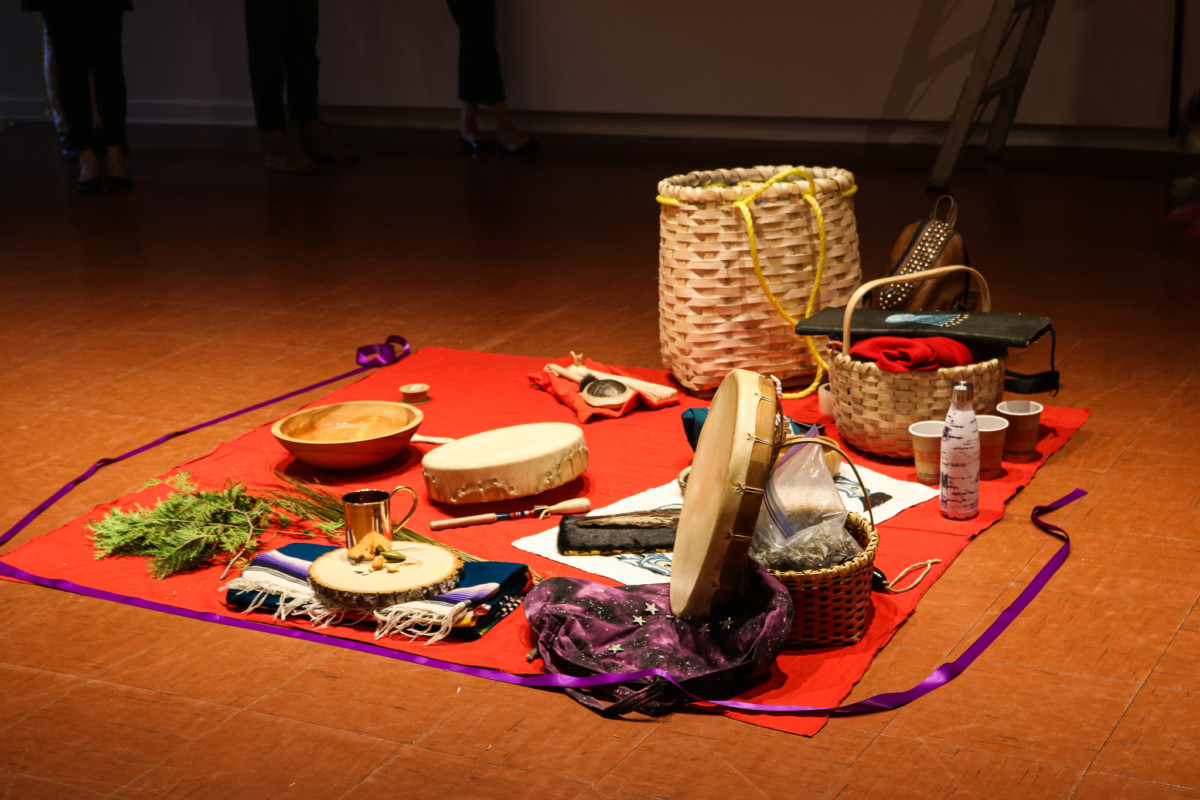

The University of New Brunswick’s Art Centre has welcomed its first artist-in-residence in almost six decades.
Natalie Sappier, who also goes by her Wolastoqey name Samaqani Cocahq, will “explore the themes of identity, language, memory and voice” over the fourth-month residency, said UNB’s website.
Sappier is a Wolastoqiyik Indigenous multidisciplinary artist from Tobique First Nation and is a New Brunswick College of Craft and Design grad.

During the residency, Sappier will work on independent projects and work in her usual mediums such as dance, spoken word, theatre, singing, writing, and painting. She said her main goal is to help encourage the students to be fully confident in their work and to share their passion and vulnerability through it.
According to UNB’s website, Sappier will transform the East Gallery in Memorial Hall into Acomuwikuwam, a “sacred place of stories and songs” where she can interact with a team of elders, dancers and musicians.
The residency will also provide access to the general public to meet and talk with the artist as a means to learn about Wolastoq culture and history.
Even though painting is her primary artistic media, Sappier said she labels herself as a story-teller.
“Whenever I feel that I need to [tell] a certain story and whatever form it is, I gravitate towards telling the story.”
Sappier began telling some of those stories on Sept. 17 at a cultural ceremony entitled Feasting the Work: Blessings of Sacred Space and Artist’s Talk.
“The reason the ceremony was significant was to bless the space, to give the medicine around each room, and to bring sacredness to help create a safe place of comfort.”
The medicine Sappier mentioned came in the form of prayers, the placing of symbolic ribbons and a rocky water ceremony.
“The water ceremony is to honour the water, which is where I get my stories from, and to honour my name, Samaqani Cocahq.”
Sappier said it’s an honour to fill this position. She said this is precisely what she needed at this time.
“I said out to the universe, ‘I need space. I need to be in central Fredericton. I need to be around my teachers.’ All of that is here, and it was just perfect.”
Marie Maltais is the director for the UNB Art Centre. She wanted to bring Sappier to the Arts Centre because she is a prominent emerging Indigenous artist in the community who works not only as a visual artist, but as a performance artist as well.
“It is important for us as Canadians to hear Indigenous stories and understand the past,” said Maltais.
“A multidisciplinary artist like Natalie who can bring together a number of disciplines, yet maintain the highest quality in each area is a rarity.”
Sappier said that having an Indigenous woman on campus to share stories and culture is not only beneficial to students and the environment on campus, but to Indigenous people themselves.
“Being creative, no matter what form is healing for us. It’s in our DNA.”
Sappier hopes her presence on campus will have a positive impact on students by creating a safe space where both herself and students can be equal.
“I want them to learn that we all carry something magical and sacred. I don’t think that we hear or encourage that enough.”
